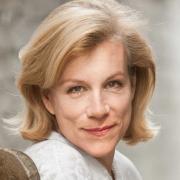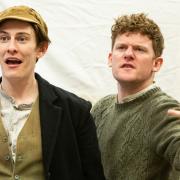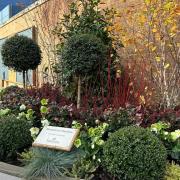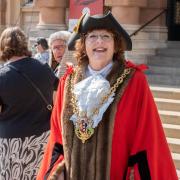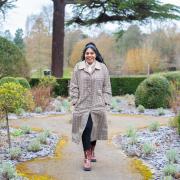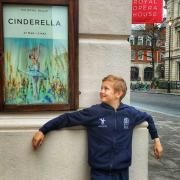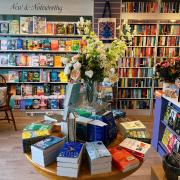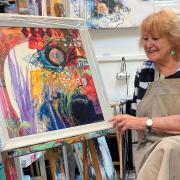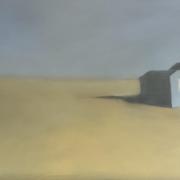Ruth Dugdall is on the trail of Mary Beale from west Suffolk, Britain’s first professional woman artist

Sometimes it’s best to begin at the beginning, so to find out about Mary Beale I decided to visit the place of her birth. Mary was born in 1633, in Barrow, a village in west Suffolk, nestled along a road lined with pine trees that curves over the farmland.
Here, Mary’s grandfather and then father, John Cradock, were rectors of All Saints’ Church. John Cradock lived with his wife, Dorothy, and two children, Mary and John, in the rectory, which unfortunately was destroyed by fire in the 1960s.
Inside the church is a copy of one of Mary’s self-portraits, although the kindly woman who welcomed me said she didn’t think many of the locals would know who the woman in the picture was. Time to reclaim one of Suffolk’s famous daughters.
Emerging talent
Mary was just 10 when her mother died, and John only a baby. Her father had a large social circle, including a group of artists who frequented Bury St Edmunds, among them Peter Lely, who became court painter to Charles II.
A keen amateur painter, John taught young Mary how to draw and she soon showed signs of artistic talent.
Walking around Barrow it’s tempting to imagine young Mary, sketching and painting, in such an idyllic environment, but although it was socially acceptable at that time for a woman to sketch or paint as a hobby, she wouldn’t have been able to undertake any formal apprenticeship or training.
Mary’s art should have remained a pastime . . . but something changed.
Painting a career
Mary was 18 when she was introduced to Charles Beale. The love letter he sent her shortly afterwards shows how immediate their attraction was. A marriage proposal quickly followed. Mary’s father was seriously ill, but he lived just long enough to see his daughter married at All Saints’ Church in 1652.
Charles and Mary were a true love match. He shared her passion for art and recognised her superior talent. The couple moved to London. Within five years of marriage Mary had borne and buried a son, but she also established herself as a semi-professional painter, taking commissions for portraits, an increasingly popular art form. Thanks to her father’s connections, notable clergymen were among her first customers, but other high-ranking families followed.
In 1660, despite being a busy mother with two young sons, Mary opened her first real studio. As her reputation grew, she became prolific and Charles became her assistant. He would greet the clients, and prepare Mary’s canvases, but most significant of all, he kept a series of notebooks, in which he described what Mary painted, how much she charged, and the comments of clients and fellow artists. In 1672 she earned £202 for her commissions, and was charging £5 for a ‘head and shoulders’. By comparison, Peter Lely, who had become Mary’s mentor and was the highest paid artist in the country, was charging £20. In 1677 Mary had 83 commissions, earning £429. She also had three apprentices, two of them women. All proof that Mary was earning her living and supporting her family with her art – the country’s first female professional artist.
The power of the selfie
We tend to think of the ‘selfie’ as a modern phenomenon, the narcissism of taking our own picture, the incessant need to document what we’re doing, even what we’re eating. But the Stuarts were equally self-obsessed. The Renaissance was a time of re-birth, a thirst for knowledge combined with an interest in art, and also with recording people in portraits, an expensive, fashionable investment for the wealthy. No wonder so many artists turned to portraiture. But why was Mary so popular?
At Moyse’s Hall, in Bury St Edmunds, is the largest collection of Mary’s art anywhere in the country, bequeathed by private collector Richard Jeffree. Several of the portraits are commissioned paintings of high-ranking women, quite naturalistic, informal, ‘a moment captured’. It’s tempting to think that Mary was able to relax her subjects so they don’t look posed because she was a woman.
She was well-known for her ability to work with children, and to capture their nature in paint. Portrait of a Young Girl is especially magical, a snapshot of the girl’s playfulness. But it is the paintings of the people she loved that have a stronger resonance. Charles’s portrait is especially striking, and the love and admiration Mary felt for her husband is evident in every brush stroke.
Mary’s self-portraits have a similar power, and show she was aware of her own importance. In one portrait she depicts herself as Britannia, in another she stares boldly out, head held high, a woman who knows her own value to the world.
One critique of her work says it was only in self-portraits that she could fully express her style. The subjects in the commissioned portraits wanted to be flattered and presented in the most fashionable way. It is in the paintings of her own family and herself that we can see Mary Beale’s true individuality as an artist.
Mary died in 1699, aged 66, and was buried in St James’s Church, Piccadilly, London. Tastes in art changed, and her style fell out of fashion. She was condemned by critics as a mere impersonator of Peter Lely, and was largely wiped from art history. In the Second World War her grave was bombed, so very little remained of this woman who had once been so admired.
But things are different today, and one of Mary Beale’s finest paintings now hangs in the National Portrait Gallery in London. It is a self-portrait, Mary looking out with a warm, intelligent face. She is showing a partly drawn sketch of her two sons, and in the background is an easel. It is a confident and compelling piece.
Thanks to collectors, and to museums such as Moyse`s Hall, and the Mary Beale restaurant in Hertfordshire, which has a collection on display, there is renewed interest in her work. In 2001 a plaque was erected in her memory, where her grave once was. Suffolk’s lost daughter – Britain’s first professional woman artist – is starting to be remembered.
Moyse’s Hall, Cornhill, Bury Saint Edmunds
IP33 1DX www.weststow.org/moyses-hall




